A Business Guide to Multilingual Bots
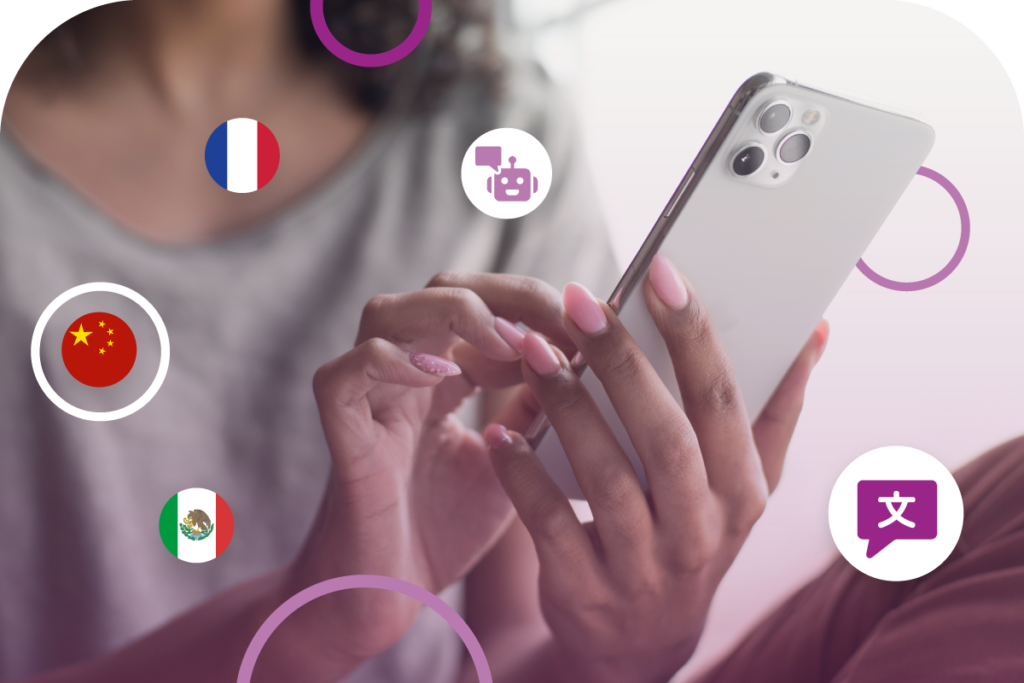
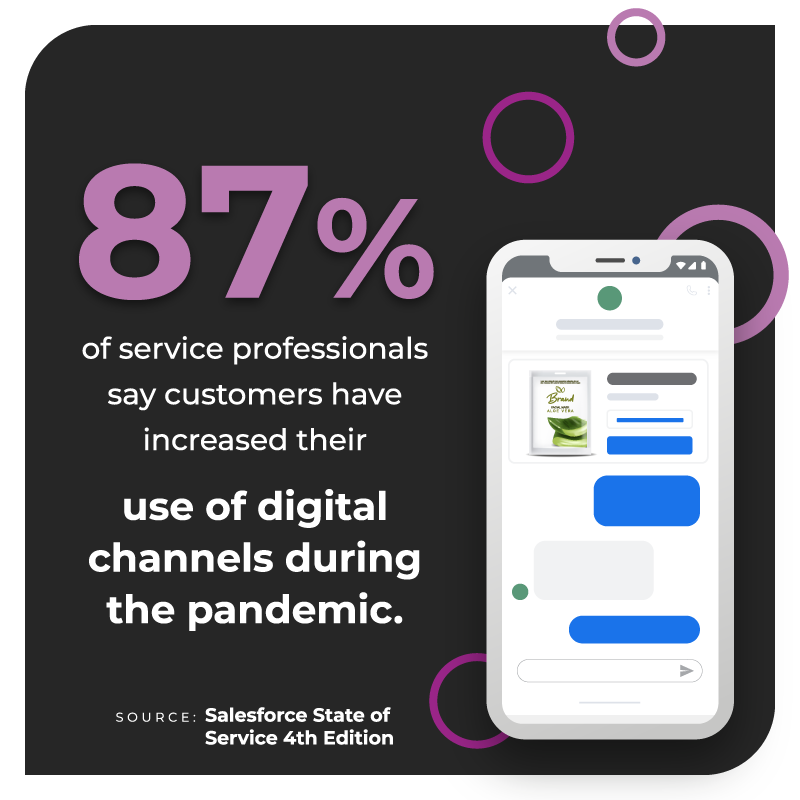 In the past two years, the number of consumer dollars spent online has grown – a lot. And it seems that growth won’t slow down anytime soon. Insider Intelligence predicts eCommerce will grow 16.1% this year – reaching $1.06 trillion.
In the past two years, the number of consumer dollars spent online has grown – a lot. And it seems that growth won’t slow down anytime soon. Insider Intelligence predicts eCommerce will grow 16.1% this year – reaching $1.06 trillion.
Clearly, consumers are embracing the convenience and safety of online shopping.
And when those consumers require pre- or post-sale service, they’re trading phone calls and store visits for digital channels such as live chat, email and messaging apps. Per Salesforce’s State of Service report, 87% of service professionals indicate consumers have upped their use of digital channels during the pandemic.
As a growing number of consumers leverage digital channels to get service, brands must have strong strategies in place to ensure they’re able to deliver great service through these channels. Multilingual bots are a key component of such a strategy.
In this post, we’ll explore what multilingual bots are, why they’re an important part of any customer service strategy, and how brands can start leveraging them to deliver great service across digital channels.
What are Multilingual Bots?
Before we dig into the importance of multilingual bots and how to get started with them, let’s get back to the basics by defining what a multilingual bot is.
Chatbots, Defined
Essentially, a chatbot (often referred to as a digital assistant or bot) is a computer program that simulates a human conversation. Brands use chatbots across myriad channels, including their own dot com or mobile app, Facebook Messenger, SMS, and Google’s Business Messages – among others.
For example, a shopper might engage with a chatbot on a beauty brand’s website to find out the status of a recent order.
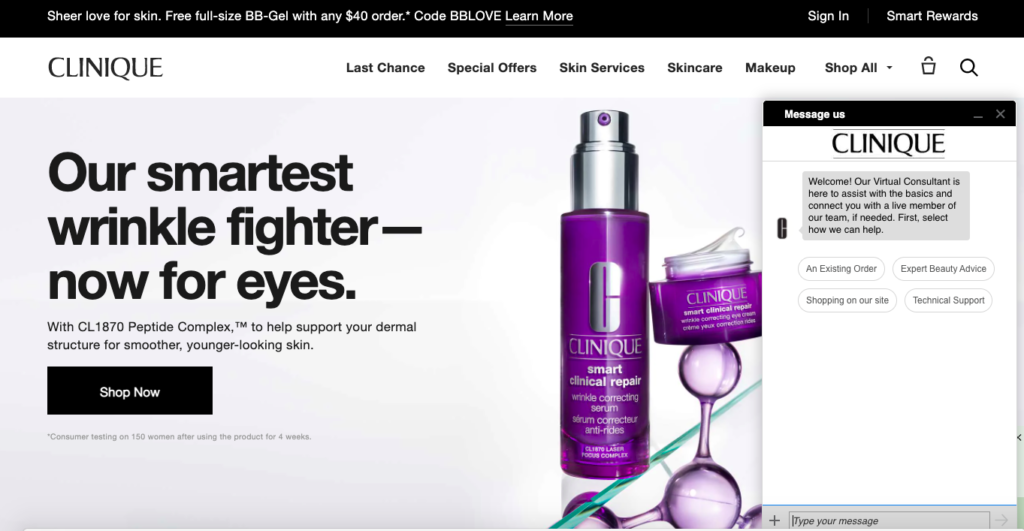
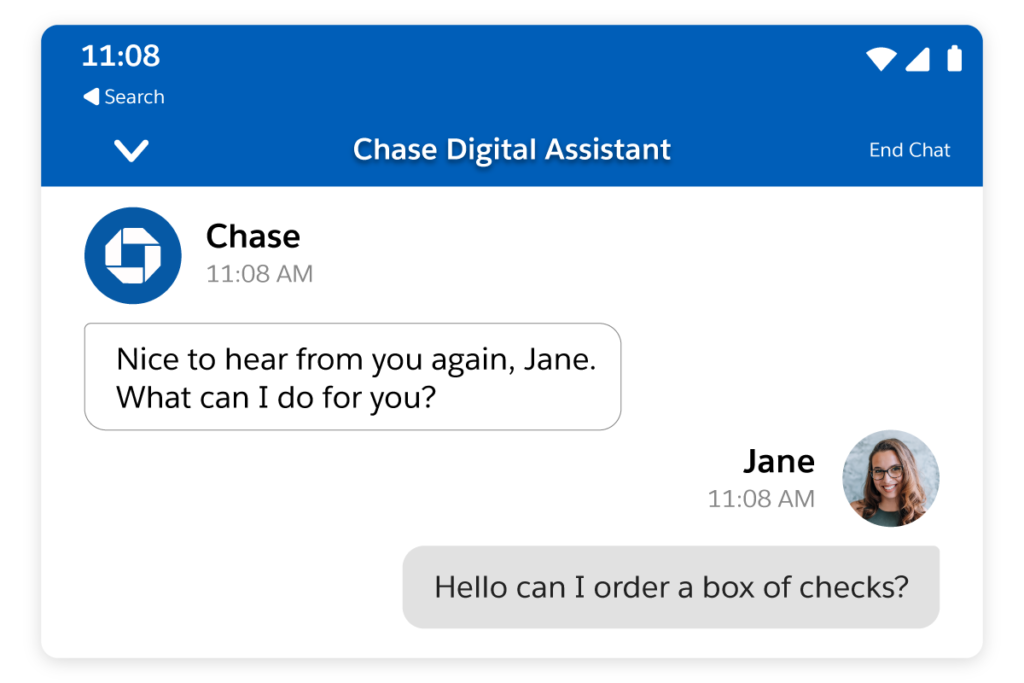 And another consumer might engage with a chatbot via their financial institution’s mobile app to find out how to order a box of checks.
And another consumer might engage with a chatbot via their financial institution’s mobile app to find out how to order a box of checks.
By leveraging artificial intelligence, chatbots can answer common questions, resolve simple issues, or complete basic tasks. For example, a bot might be programmed to help shoppers track orders, cancel recent orders, or find the nearest store location. Digital assistants can also point consumers to appropriate knowledge articles for further assistance. For example, if a shopper is inquiring about a brand’s return policy, the bot might send a link to a knowledge article that spells it out. And of course, if a consumer has a complex issue, a bot can “transfer” them to a live agent for more help.
Multilingual Chatbots, Defined
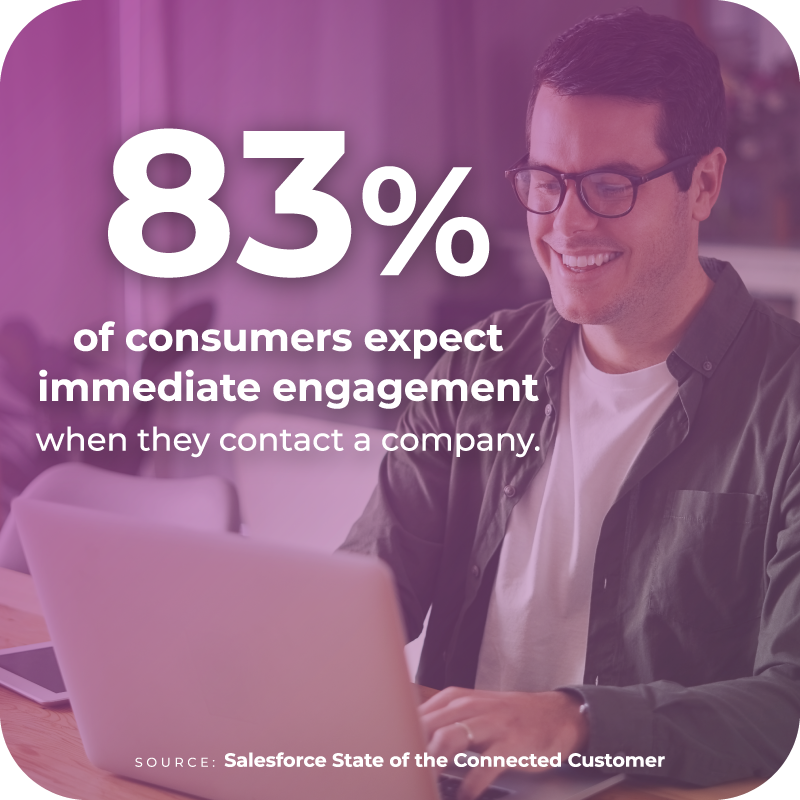 But what are multilingual bots? As the name suggests, multilingual bots are digital assistants or chatbots that are created to effectively engage with consumers in different languages.
But what are multilingual bots? As the name suggests, multilingual bots are digital assistants or chatbots that are created to effectively engage with consumers in different languages.
Why Multilingual Bots are a Key Customer Service Channel
Of course, visiting a customer service desk or calling an 800 number is still a viable way to get service. But increasingly, consumers prefer using digital service channels – and they have high expectations when they do. According to Salesforce’s State of the Connected Customer report, 83% of consumers expect immediate engagement when they contact a company.
Digital assistants enable brands to better meet (and exceed) these expectations – which is increasingly important in a competitive market.
With digital assistants, consumers can get help whenever they need it via a familiar channel. According to our own recent research, 56% of consumers believe a digital assistant can answer some of their questions and get them to the right live person if needed.
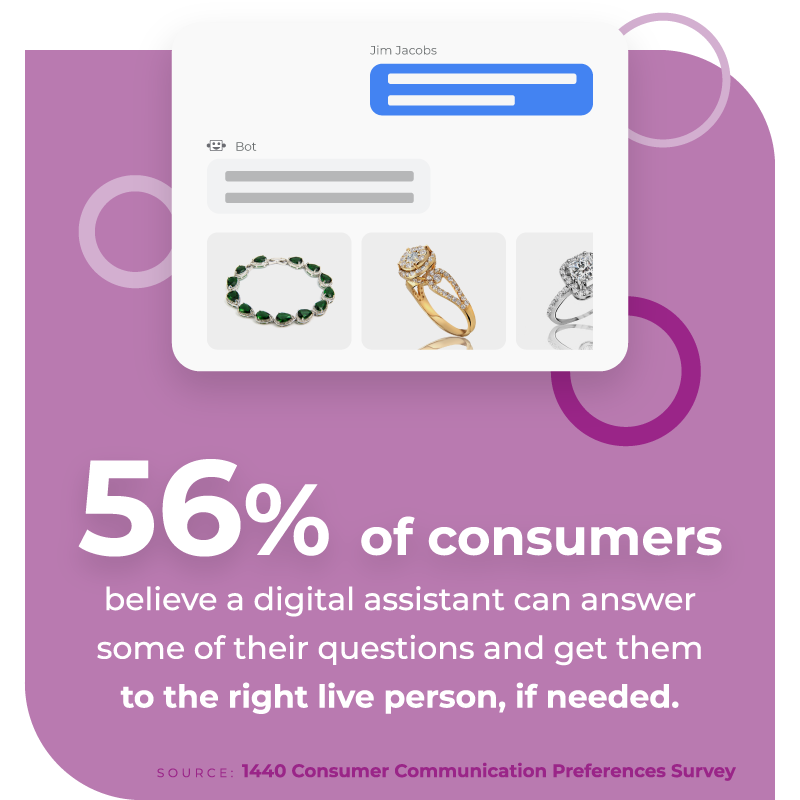 And because chatbots are equipped to answer common questions, resolve simple issues, and point customers to self-service resources, this reduces the volume of cases for live agents. That means agents can better focus on resolving complex issues and delighting customers.
And because chatbots are equipped to answer common questions, resolve simple issues, and point customers to self-service resources, this reduces the volume of cases for live agents. That means agents can better focus on resolving complex issues and delighting customers.
But why multilingual bots?
Research from McKinsey & Company tells us that 71% of consumers expect companies to deliver personalized interactions. And three-quarters get frustrated when companies don’t deliver.
A big part of delivering personalized interactions is the ability to communicate with consumers in their own language. According to CSA Research, 76% of consumers prefer to find product information in their preferred language. And three-quarters are more likely to buy from a brand again if they’re able to receive customer care in their own language.
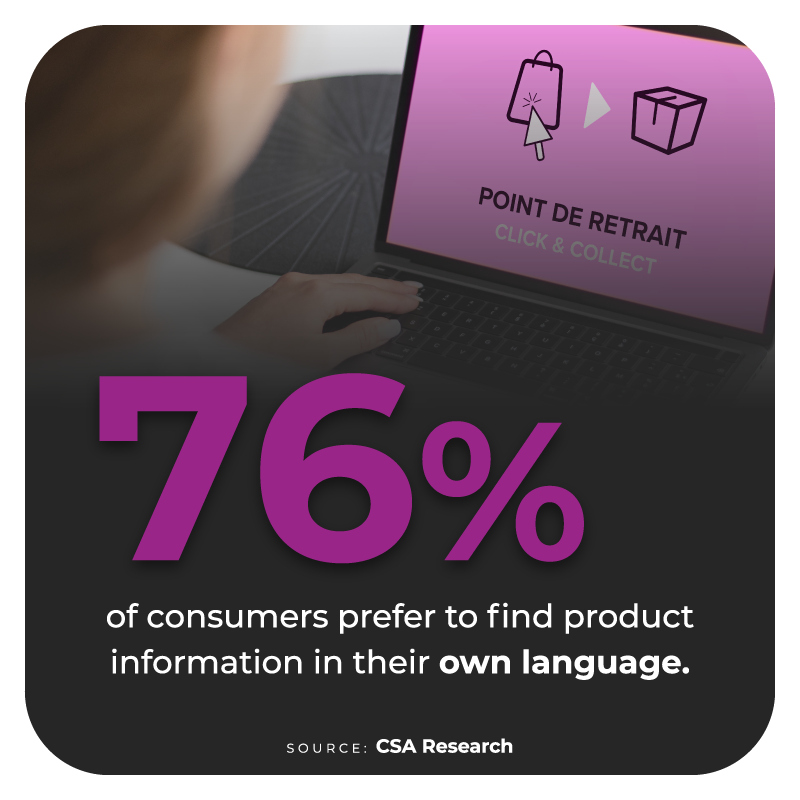 Let’s say you’re a global brand, based in the U.S. A consumer in Spain has made a purchase, but they need to exchange the produ ct for a different size. So they reach out via live chat and begin interacting with a digital assistant. But the digital assistant is only set up to speak English; and the knowledge article the bot shares is also only in English. The consumer is frustrated, and they decide not to do business with you again.
Let’s say you’re a global brand, based in the U.S. A consumer in Spain has made a purchase, but they need to exchange the produ ct for a different size. So they reach out via live chat and begin interacting with a digital assistant. But the digital assistant is only set up to speak English; and the knowledge article the bot shares is also only in English. The consumer is frustrated, and they decide not to do business with you again.
The world is getting smaller. If you want to do business globally, you’ve got to be able to communicate with all of your customers, regardless of language. And you’ve got to be able to do it across all channels, including chatbots. Multilingual chatbots are a must.
Getting Started with Multilingual Chat Bots
A growing number of brands are incorporating digital assistants into their service strategies. Per Salesforce, 38% of organizations used chatbots in 2020, compared to 23% in 2018. That’s an increase of 67%.
However, it’s important that those bots are equipped to provide assistance in whatever languages your customers speak. How can you get started?
1. Set Up Your Multilingual Bots
The first step is to set up your bots. If you’re a Salesforce Service Cloud customer using Einstein bots, there are a couple of different ways you can do this. One way is to take an existing bot and create a clone in a different language. For example, you might have a bot named Angela that interacts in English – and one named Pablo that interacts in Spanish.
Another approach is to build a single bot and translate its meta-data to support multiple languages of your choice.
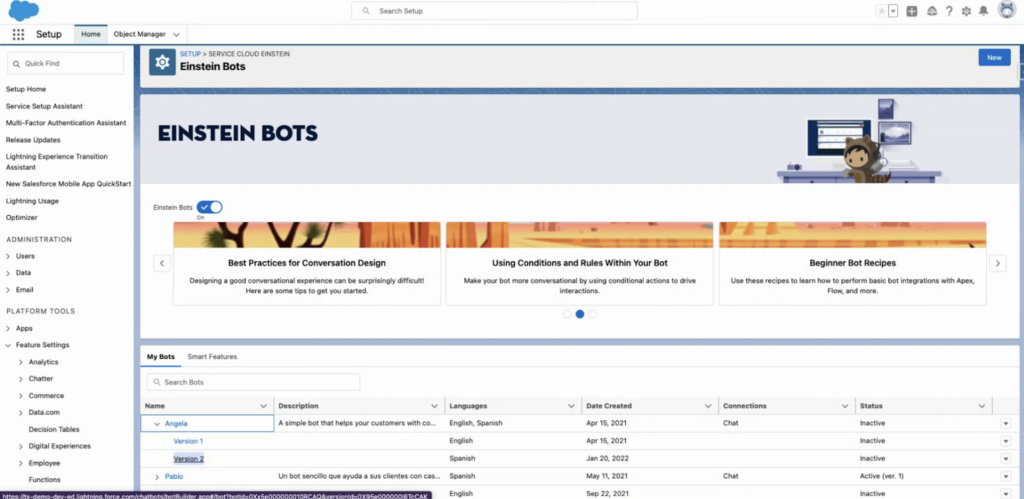
2. Translate Knowledge Articles
Oftentimes, bots share knowledge articles with customers so they can learn more about a certain topic. For example, a children’s shoe brand might share a knowledge article about how to measure a child’s feet – or an electronics brand might share one about how to make returns.
It’s important that consumers are able to access these knowledge articles in their own language. You could take all of your knowledge articles and manually translate them, either by sending them to a translation service or by copying and pasting into a tool like Google Translate. But this is time-consuming – and leaves plenty of room for error.
A better approach is to leverage a tool like Translation Studio from 1440. Translation Studio is a robust language translation solution that can accurately translate just about anything in Salesforce, including (but certainly not limited to) knowledge articles.
With Translation Studio, you can translate knowledge articles into any language – which allows your customers, regardless of language, to get the information they need.
3. Equip Live Agents with the Ability to Break Down Language Barriers
Multilingual chatbots can complete simple tasks and solve basic issues. But for complex cases, a live agent must get involved. Make sure they’re equipped to effectively communicate with customers and deliver great experiences, regardless of the customer’s language.
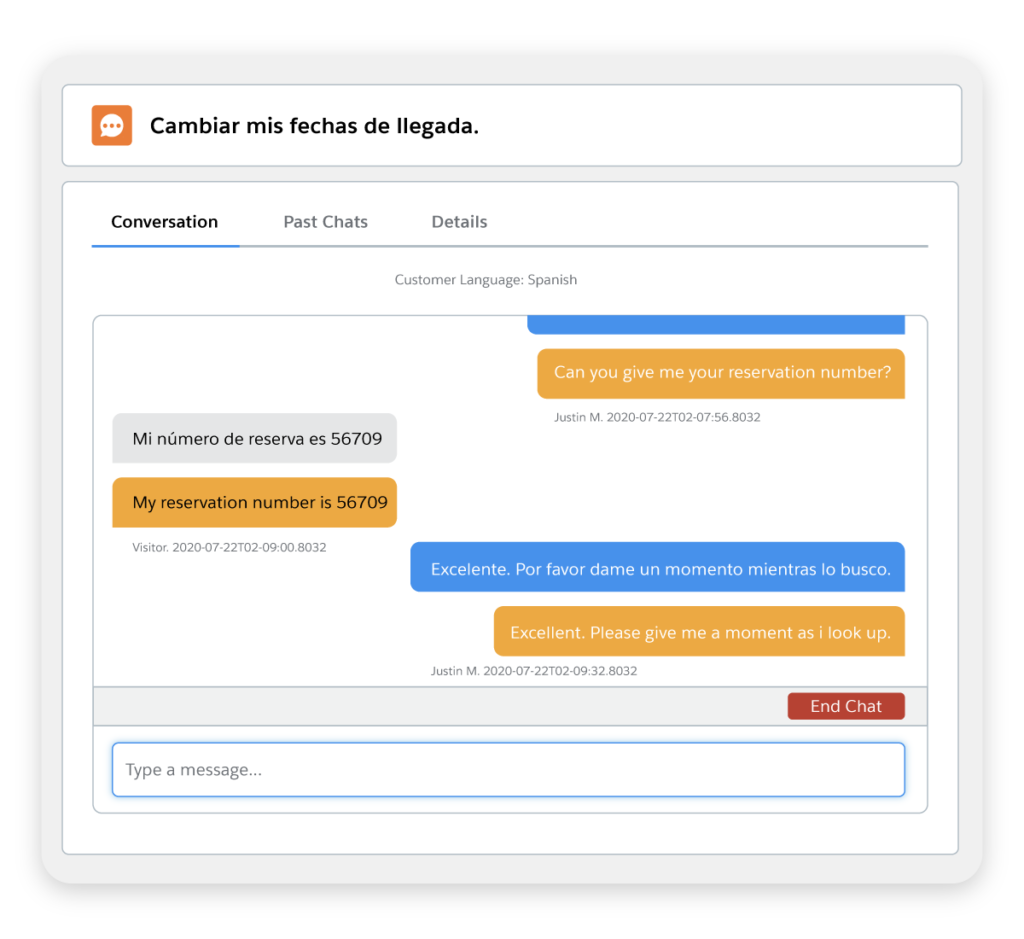 One option is to hire customer service agents who speak all of the languages your customers do. But that’s not exactly easy – or cost-effective. A better option to use Translation Studio from 1440, which allows your agents to easily translate live chat conversations into just about any language – without leaving Salesforce.
One option is to hire customer service agents who speak all of the languages your customers do. But that’s not exactly easy – or cost-effective. A better option to use Translation Studio from 1440, which allows your agents to easily translate live chat conversations into just about any language – without leaving Salesforce.
Incorporate Multilingual Bots into Your Customer Service Strategy
Modern consumers expect great service experiences. Brands must deliver, or risk losing prospective and existing customers.
Multilingual bots empower brands to extend the reach of their customer service – and deliver great experiences regardless of language. Make 2022 the year you incorporate this powerful tool into your brand’s strategy.
Want to learn how Translation Studio from 1440 can help you break down language barriers and make authentic connections with consumers, regardless of channel? Click to learn more.